- Home
- Julian Stockwin
Stockwin's Maritime Miscellany Page 10
Stockwin's Maritime Miscellany Read online
Page 10
Jack Tar carrying a marline spike, gang cask and handy-billy tackle.
* * *
PLENTY OF SCOPE – sufficient resources to carry out a task. DERIVATION: from the Greek skopos, meaning to mark or aim, in nautical parlance scope is the length of cable run out when a vessel rides to anchor to safely clear her neighbours.
* * *
FIRST, TAP OUT THE WEEVILS
An entry in the Encyclopaedia Britannica of 1773 reads: ‘Sea-bisket is a sort of bread much dried by passing the oven twice to make it keep for sea service. For long voyages they bake it four times and prepare it six months before embarkation. It will hold good for a whole year.’ Generally, these hardy forms of carbohydrate were produced using just flour and water, and were about one-third heavier than the flour from which they were made.
The ship’s biscuit (also known as hard tack) has a long association with seafarers, going back to the days of ancient Egyptian sailors. They were also favoured by the Greeks and Romans. Large quantities of ship’s biscuits were stored at the Deptford Naval Yard as early as 1513. Basic, durable and almost indestructible, they provided a reliable source of energy for seamen doing hard physical labour in all weathers. The ration of biscuit per sailor was 450 g a day. One biscuit, dated 1784, now exhibited in the National Maritime Museum at Greenwich, attests to their keeping powers.
A perennial problem with ship’s biscuits was infestation with weevils. A number of variations of the recipe were tried to remedy this, including adding caraway seed, but the pesky bugs merely ignored the additional ingredient. Admiral Muir suggested the polite way to deal with weevils was to split the biscuits open with a stout knife and scrape the insects off the cut surface. The more usual way to deal with them was with a brisk tap on the surface of the table so the weevils came out of their own accord. Sailors liked to crack the biscuits by breaking them open in the crook of their elbows.
If the biscuit was poorly baked the outside would crumble away, leaving a hard, rigid centre. These were called reef nuts and were not discarded. Hungry midshipmen collected them and nibbled them during the day – hence the nickname of ‘reefer’ for the young gentlemen. And if they couldn’t face them in daylight they saved them up and ate them in the dark.
Maggots, nicknamed ‘bargemen’, also infested biscuits. They were cold to the taste in the mouth. One naval wit said, ‘Bread, it is well remarked, is the staff of life; but it is not quite so pleasant to find it life itself, and to have the power of locomotion.’
Towards the end of the eighteenth century naval ships of the line stored biscuit in a special bread room. The steward’s assistant collected the daily ship’s ration from there. Because of the flour dust he was called Jack in the Dust or Jack Dusty. At the height of their production, the large bakehouses at Portsmouth and Gosport and other facilities were manufacturing thousands of biscuits a day.
Bakeries began to be fitted in naval ships in the mid 1850s, enabling fresh bread to be made available for the duration of the voyage. There were still large stocks of biscuit in the naval victualling stores, however, which were not going to be allowed to go to waste, and they continued to be supplied for a number of years. Moreover, the navy has not let the custom fade away; stout ship’s biscuits are still purchased by the Ministry of Defence for use in operational ration packs.
For the merchant marine, ship’s biscuits were an essential part of the sea diet. In the port city of Liverpool they were known as Liverpool Pantiles, after a type of roofing tile, because of their shape and texture. In many merchant vessels biscuits, along with salt meat, remained standard provisions until the late 1950s.
Midshipman, by Rowlandson.
A MARVEL OF THE AGE
In Georgian times England’s six Royal Dockyards were the biggest industrial enterprises in the world, the most important ones being at Portsmouth and Plymouth. During the Napoleonic Wars 15,000 men worked in these dockyards, including 5,000 shipwrights, one-third of the number of that profession in the whole country. All told there were over 25 different trades. The dockyards were huge tourist attractions, drawing people from every walk of life, from ordinary citizens to artists to foreign dignitaries, all wanting to see the sheer scale and diversity of activity at first hand. Even the future Queen Victoria was taken to Portsmouth dockyard at the age of 12 as part of her education.
The dockyard at Portsmouth covered 33 hectares. Inside the complex were vast piles of timber and ironwork stacked on the ground. The clang and roar of smithies and the stink of tanneries assaulted the senses. There was all manner of buildings including storehouses, mast and plank houses, seasoning sheds, saw pits, shops for carpenters and other skilled workers, rigging houses, rope-walks 400 m long and the famous block mills. The dockyard did not just build and repair ships; it boasted massive bakeries, salting houses for preserving meat, and breweries.
* * *
Cornering the Block Market
A ship of the line needed over 1,000 blocks, the wooden pulleys through which ropes were hauled to control the sails and for other operations. At the end of the eighteenth century the navy was purchasing 100,000 blocks a year, all made by hand. Marc Brunel (the father of Isambard Kingdom Brunel) mechanised this process, creating the world’s first production factory in Portsmouth dockyard, and by 1807 the Portsmouth block mills were meeting the navy’s entire requirements, 10 unskilled men producing as many as 110 skilled craftsmen had done before.
* * *
In the early 1800s one visitor to Portsmouth dockyard noted that the heat of the anchor-forge was so intense that the men who worked there had to be supplied with 5 litres (8½ pints) of beer a day. He marvelled that this, together with wages of 29 shillings a week, sufficed to tempt ‘these Cyclops to abridge their lives and live in this emblem of Tartarus for sixteen hours a day’.
Fittings of block strops.
LOBLOLLY BOYS
The term is somewhat of a misnomer – they were nearly always old seamen, no longer fit for normal ship duties. They acted as assistants to the surgeon, with varying degrees of expertise and compassion. Loblolly is an old English word; its first known use was in the sixteenth century. The term is derived from lob, meaning to bubble, and lolly, a regional word for broth, or a kind of gruel. Loblolly was adopted in the navy to describe semi-liquid food given to the sick.
Loblolly boys were found in both the US navy and the Royal Navy. In US naval regulations the rate first officially appeared in 1814 (although it had been in common use for many years before). Sick call was announced by the loblolly boy standing at the foremast banging a mortar with a pestle.
Aboard USS Chesapeake a black loblolly boy called William Brown was the only person who could sound a trumpet and was rated bugleman by Captain Lawrence. Unfortunately his musical skill was not attended by martial temperament. Brown was court-martialled for failing to sound ‘Boarders away’ when ordered to do so.
Around the middle of the nineteenth century the Royal Navy replaced the rate of loblolly boy with that of sick-berth attendant. In the US, likewise, the loblolly boy faded into history with the introduction of the rate of surgeon’s steward.
* * *
SPIN A YARN – telling a story by stretching out the truth. DERIVATION: the many miles of rope aboard wooden ships needed regular repair and maintenance. Pieces of old rope were teased out to make spun yarn, which was used for this purpose. As the mariners bent to their task they swapped tales as they worked, embellishing them in the telling.
* * *
THE SWINGING BED OF THE SAILOR
When Columbus landed in the Bahamas in 1492 he found that the natives used nets of cotton stretched between two posts as beds. They called them ‘hamacs’. This was changed to ‘hamaca’ by the Spanish. Hammocks in the British navy stem from the age of Drake, when they were widely adopted, and were still on issue until recent times.
Before the introduction of hammocks sailors slept on the deck. During rough weather they would be thrown about and were often injured
. The hammock was a vast improvement as it wraps around the sailor like a cocoon, making it virtually impossible to fall out of; and it moves in concert with the motion of the ship, while gravity keeps it in line with the others.
Hammocks were slung fore and aft, each at a numbered peg so that the sleeper was always in the same place and could be found quickly if needed. The official allocation of hammock space was 36 cm per man, or 71 cm if the man was a petty officer. However, with the two-watch system half the crew was on deck at any one time, so each man had twice that, in effect as much space as someone sharing a double bed today.
By Nelson’s time each man had two hammocks, to allow for cleaning. They were made of canvas 1.8 m by 0.9 m and in each was a mattress made from flock or rags, a blanket and a coverlet. Hammocks belonged to the Navy Board and the men either brought bedding with them or purchased it from the purser.
Each morning hammocks were taken down and lashed with seven marling hitches, representing the seven seas. They were carried topsides to be stowed and aired, where they were put in special netting at the side of the ship to act as protection from musket balls under enemy fire.
Hammocks could also serve as life preservers; one thrown to a man overboard could keep him afloat for 24 hours. If a seaman died at sea he was sewn into his hammock with one or two round shot at his feet – and the last stitch through his nose.
Sometimes females were allowed to stay on board overnight when a ship was in harbour. The women could linger an extra hour in the hammocks, providing they could prove their gender by showing a hairless leg to the bosun’s mates as they did their rounds.
During the late 1700s the British prison system used hammocks in their correctional facilities in order to save space. The hammocks were hung from a brass wall hook or ring on one wall and secured to an opposite wall in the same manner, or to the bars of the cell. However, prisoners soon discovered that the metal hooks could be used as weapons for escape, and the use of hammocks was abolished.
In Nelson’s day each sailor had two hammocks.
MAL DE MER
The intended bride of the future Edward II set sail from Norway in 1290 but became seasick on the voyage. Although the ship made a stop at the Orkney Islands to allow her to recover, she died.
From ancient times ship handling and fighting has been affected by mal de mer, or seasickness. Martin Frobisher, in an attempt to counter its effects, took ginger along with him on his 1576 voyage to discover the Northwest Passage.
Nelson always suffered at the beginning of a voyage, and Sir John Franklin was never able to take charge of his ship until he had passed the Bay of Biscay. The current Prince of Wales, who himself served in the navy, has been known to try to lift a sufferer’s spirits by joking, ‘If you want a guaranteed cure for seasickness, take my advice and just lie under the nearest tree for an hour.’
The attitude of the Royal Navy has always been that seasickness is not a malady but something you just put up with – and you get on with your job. One rear admiral recently echoed this official lack of sympathy when he stated that the stabilisers fitted to today’s modern warships are not to prevent seasickness, but for the protection of the sensitive electronic equipment on board.
COLOUR-CODED ADMIRALS
King Edward I appointed the first English admiral in 1297. He was William de Leyburn, given the splendid title of ‘Admiral of the sea of the King of England’. The Royal Navy has had admirals since at least as far back as the sixteenth century. At the time of Elizabeth I the fleet had become so large that it was organised into three colour-coded squadrons: red for the admiral’s, white for the vice-admiral’s and blue for the rear admiral’s.
Later, as the number of ships in the fleet grew further, and the three squadrons into which they were divided became larger, three admirals were allocated to each battle fleet (based on the line of battle) – a full admiral in command in the centre, a vice-admiral as his second in command taking the van (forward) and a rear admiral as third in command in the rear. These ranked in the order red, white and blue, and admirals took rank according to the colour of their squadron. Some officers were promoted rear admiral, but to no particular squadron. They were known colloquially as yellow admirals.
In 1864 the organisation of the British fleet into coloured squadrons was discarded. The red ensign was allocated to the merchant navy, the Royal Navy adopted the white ensign, and the blue ensign was used by the naval reserve and naval auxiliary vessels.
Elizabeth I (Armada Portrait).
* * *
TOUCH AND GO – a precarious situation in which the slightest change could spell disaster. DERIVATION: sometimes a sailing vessel touched ground but then lifted off again quickly, thus avoiding disaster by a narrow margin.
* * *
THE BIG BANG
The sailing navy’s biggest ship of the line could carry more than 100 great guns on three gun decks, making it an arsenal of destruction able to unleash as much firepower on the enemy as the mightiest fortress on land. The largest cannon weighed over three tons and could penetrate 2 feet of solid oak a mile away.
The production of cannon was a very skilled, time-consuming and expensive process – and there were never enough guns. To complicate matters, French and British guns had different calibres, so captured guns were of no use to the victor!
The Vergruggen family of Denmark established a gun foundry in Woolwich, England, which by 1780 had come to be regarded as the best in the world. Bronze guns (erroneously called brass cannon) were stronger and lighter, did not rust and could be polished to a high gleam, but with improvements in casting and the quality of iron they fell out of favour and during the French wars the typical navy gun was made of iron.
Count Rumford, the noted Georgian scientist, observing the extreme heat generated by the boring process during manufacture of cannon, developed theories of heat and energy that laid the basis for the modern science of thermodynamics.
British tactics were to try to get as close to the enemy ships as possible to shoot at the hull and sink the ship; most engagements were fought at less than 90 m. This made for a bloody encounter with murderous splinters of wood blasted from the timbers as well as the actual damage from the cannon balls.
Up to 20 men served each big gun during battle, led by the gun captain, a highly skilled sailor. Some of the gun crew had special duties such as boarding and sail-trimming and could be called away to these tasks even under enemy fire. A greatly feared hazard was an unsound cannon. Casting flaws could not be detected by the naked eye, and there was always the possibility that when fired a cannon could explode, with deadly consequences.
French 24-pdr run out.
THE FICTITIOUS PUSSER’S TALLIES
Life was hard for families of sailors who died at sea. Prize money was only distributed among survivors. The victim’s shipmates would auction his possessions for a few coins to pass on to his widow, paying well over the odds for the items, but this would not put food in mouths for very long.
By an act of King George II each Royal Navy ship carried on the books one or two widows’ men per 100 of her complement, depending on her circumstances. These men were purely fictitious and given ‘pusser’s tallies’, imaginary names. Their pay went toward a fund for the relief of the families of warrant and commissioned officers who were killed in service. This practice lasted from 1760 to 1832.
However, even as early as the sixteenth century there was some formal help for injured sailors and their families. From 1590, all seamen in the Royal Navy made contributions of six pence per month from their wages to support the Chatham Chest, which paid pensions to injured seamen. Two men were largely responsible for setting up the fund, the heroes of the Armada campaign Sir John Hawkins and Sir Francis Drake.
Payments were on a sliding scale, £6 13s. 4d. per annum for the loss of a limb, £12 for blindness. In addition each claimant received a lump sum, equal to one year’s entitlement. In effect this was the world’s first occupational pension. Ho
wever, during the 224 years that it existed there were a number of difficulties with meeting the payments, and from 1670 the government took over the administration of the system, for which responsibility was assumed by Greenwich Hospital in 1814.
The assets of the fund were kept in an actual chest at Chatham dockyard and secured by five locks, which opened to five separate keys held by five different officers, an expedient intended to prevent misappropriation of funds. The chest exists to this day and may be seen at the Chatham Historic Dockyard museum.
* * *
Greenwich Hospital
Greenwich Hospital was established by royal charter in 1694 and the first batch of wounded veterans, known as Greenwich pensioners, arrived there in 1705, where they spent the rest of their days in relative comfort. At its peak the hospital was sheltering and caring for 2,800 men. The able-bodied could wander in the streets of Greenwich or enjoy the green slopes of the park. And life there was not without its lighter moments. In 1796 there was a famous cricket match between the pensioners with one arm and those with one leg. The one-leggeds won. The charity also provided support for seamen’s widows and education for their children.
* * *
A Greenwich Pensioner.

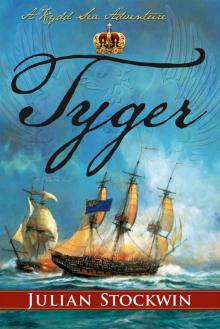 Tyger: A Kydd Sea Adventure (Kydd Sea Adventures)
Tyger: A Kydd Sea Adventure (Kydd Sea Adventures) Seaflower - Kydd 03
Seaflower - Kydd 03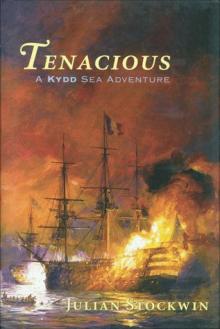 6-Tenacious
6-Tenacious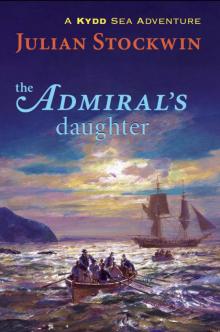 The Admiral's Daughter
The Admiral's Daughter Mutiny k-4
Mutiny k-4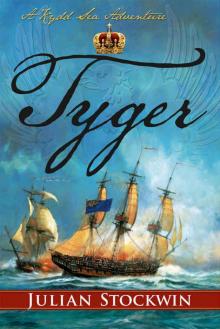 Tyger
Tyger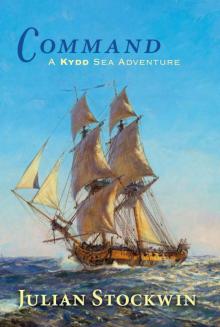 Command
Command Pasha
Pasha Artemis k-2
Artemis k-2 14-Caribbee: A Kydd Sea Adventure
14-Caribbee: A Kydd Sea Adventure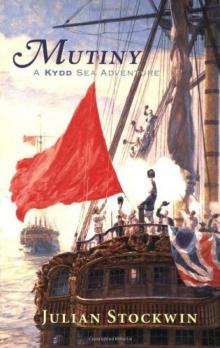 Mutiny - Kydd 04
Mutiny - Kydd 04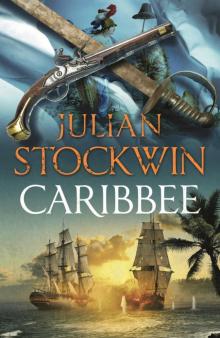 Caribbee
Caribbee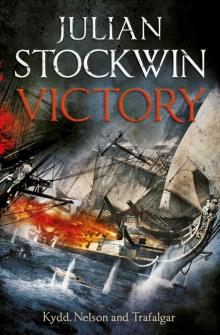 Victory
Victory Quarterdeck
Quarterdeck Artemis - Kydd 02
Artemis - Kydd 02 The Powder of Death
The Powder of Death Conquest
Conquest Betrayal tk-13
Betrayal tk-13 Stockwin's Maritime Miscellany
Stockwin's Maritime Miscellany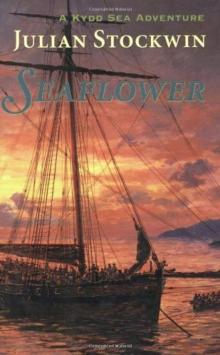 Seaflower: A Kydd Novel
Seaflower: A Kydd Novel Mutiny
Mutiny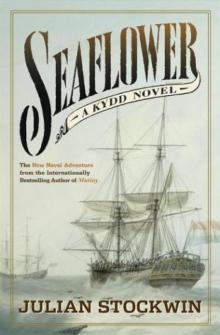 Seaflower k-3
Seaflower k-3 Seaflower
Seaflower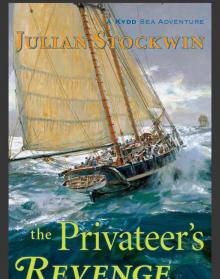 The Privateer's Revenge
The Privateer's Revenge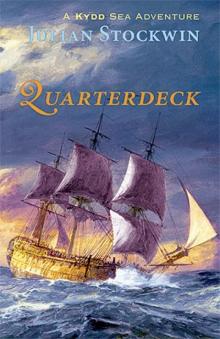 Quarterdeck: A Kydd Sea Adventure
Quarterdeck: A Kydd Sea Adventure Kydd
Kydd Artemis
Artemis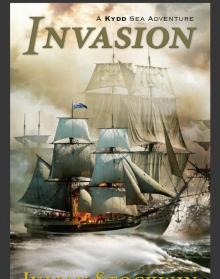 Invasion
Invasion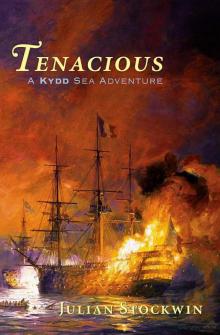 Tenacious
Tenacious 06 - Tenacious
06 - Tenacious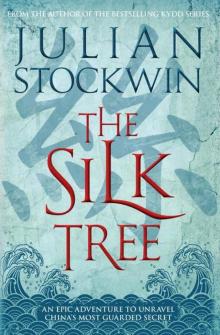 The Silk Tree
The Silk Tree